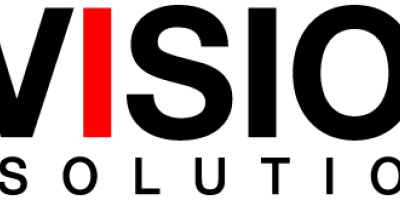Whatever else they do, all organizations are in the business of managing information. That information comes in various forms, including structured data (such as names and numbers in a database) and unstructured data (such as documents, presentations, videos, drawings, and graphs). Organizations have extensive experience in maintaining structured data, but managing and securing unstructured data while making it easily accessible to—and, more importantly, findable by—the people who need it can be a challenge. ACOM's EZContentManager helps meet that challenge. It's sold as a standalone product or as an add-on to ACOM's EZPayManager/400 payment management application or its EZeDocs/400 document output management software.
ACOM designed EZContentManager to be easy to install and use. It currently runs on Windows servers and uses Microsoft SQL Server as the underlying database, but the company plans to port it to DB2 in the near future.
EZContentManager's comprehensive content capture layer monitors the iSeries IFS and folders on network drives and pulls in designated documents as they are created or modified. The software can monitor and import any file type, including Microsoft Office documents, PDF files, TIFF images, video files, and audio files. There is also a batch import utility, and individual documents can also be loaded manually. Optionally, documents can be converted to PDF format on upload. All documents created from the iSeries are saved as text-searchable, color PDFs for import into EZContentManager.
Paper documents can be scanned into the system and managed like any other electronic content. Scanned documents can have metadata automatically attached to them, and an OCR function can, optionally, translate the scanned image into text.
Once a document is imported, an abstract can be assigned to it so users don't have to read through whole documents to find what they want.
EZContentManager allows for an unlimited number of search indices for each document type. In addition, a full-text search capability that can work with any text file allows users to find documents even when an appropriate index has not been defined. When a user selects a document from the full-text search results list, the search terms are automatically highlighted in the document so users can quickly find the terms and determine if they are relevant in that context.
When appropriate, a complete history of a document can be maintained using versioning capabilities.
Browser-Based Interface
Content searching and retrieval is done through a standard Web browser. Users can customize the user interface so that, for example, the system will send them to a specific page when they log in. In addition, document lists will contain only the information they want to see, such as the document name and version number, but not the creation date, file size, or status.
EZContentManager offers features that improve user productivity. For example, by subscribing to specific files or entire folders, users can stay current with dynamic content, without the need to manually check those folders and files on a regular basis. When there are additions or changes to content they've subscribed to, they will be notified by email or through a notification in a "watch list" that displays prominently in the user interface.
Obviously, the subscription service does not eliminate all requirements to search for files. If users frequently reuse the same search criteria, they can set up predefined filters. Then, whenever they want to perform the same search, they can apply the filter rather than reenter all of the criteria.
Further simplifying information retrieval, related documents can be linked so that if, for example, a customer calls to inquire about an invoice, an employee can quickly view all files associated with that invoice, such as purchase orders, shipping documents, and checks.
When a user performs a search, multiple documents can meet the specified criteria. As users go through the results list, they can choose to view documents in "preview" mode, which strips out graphics and most formatting. Depending on the nature of the document, this can dramatically shrink download sizes, thereby improving response times and reducing the drain on bandwidth.
EZContentManager offers many facilities to quickly get information into the hands of the people who need it. For example, it ties into existing email software to allow files to be emailed, without the need to open an email client. And an eFax account can be used to fax documents without leaving EZContentManager.
Workflow management features can route documents to people who need to approve them. This facility allows you to specify what is to be done if somebody on the approval list rejects the document.
Easy Administration
Like content searching and retrieval, administration is done through the browser-based interface. Anyone with administrator privileges can authorize new users by simply providing the user's name, email address, and an initial password. The system can also be set to allow new users to register themselves, but they won't gain access to documents managed by EZContentManager until an administrator provides the appropriate authorization. Registration information for self-registered new users shows up in a log that administrators can monitor.
Once registered, users can be assigned to groups. Those groups can then be used to simplify security settings by restricting documents and folders to specific groups rather than specifying privileges for each user. Security can also be controlled at the user level when necessary.
To effectively manage and minimize storage utilization while continuing to fulfill corporate data retention requirements, administrators can set retention policies and archive content to offline media, such as CD-ROM, when appropriate.
To help maintain security and accountability, EZContentManager provides system audit reports that include information such as who accessed content, what IP address they accessed it from, and the data and time of access.
Space limitations don't allow for the review here of all features, some of which you wouldn't necessarily associate with content management software, such as an events calendar and user forums. For a complete list, contact ACOM Solutions, Inc. or visit their Web site at www.acom.com/content_management/index.html.
Joel Klebanoff is a consultant, a writer, president of Klebanoff Associates, Inc., a Toronto, Canada-based marketing communications firm, and author of BYTE-ing Satire. Joel has 25 years experience working in IT, first as a programmer/analyst and then as a marketer. He holds a Bachelor of Science in computer science and an MBA, both from the University of Toronto. Contact Joel at

ACOM Solutions, Inc.
2850 E. 29th Street
Long Beach, CA 90806-2313
USA
Web: www.acom.com
Email:
Tel: 562.424.7899
Fax: 562.424.8662






















 More than ever, there is a demand for IT to deliver innovation. Your IBM i has been an essential part of your business operations for years. However, your organization may struggle to maintain the current system and implement new projects. The thousands of customers we've worked with and surveyed state that expectations regarding the digital footprint and vision of the company are not aligned with the current IT environment.
More than ever, there is a demand for IT to deliver innovation. Your IBM i has been an essential part of your business operations for years. However, your organization may struggle to maintain the current system and implement new projects. The thousands of customers we've worked with and surveyed state that expectations regarding the digital footprint and vision of the company are not aligned with the current IT environment. TRY the one package that solves all your document design and printing challenges on all your platforms. Produce bar code labels, electronic forms, ad hoc reports, and RFID tags – without programming! MarkMagic is the only document design and print solution that combines report writing, WYSIWYG label and forms design, and conditional printing in one integrated product. Make sure your data survives when catastrophe hits. Request your trial now! Request Now.
TRY the one package that solves all your document design and printing challenges on all your platforms. Produce bar code labels, electronic forms, ad hoc reports, and RFID tags – without programming! MarkMagic is the only document design and print solution that combines report writing, WYSIWYG label and forms design, and conditional printing in one integrated product. Make sure your data survives when catastrophe hits. Request your trial now! Request Now. Forms of ransomware has been around for over 30 years, and with more and more organizations suffering attacks each year, it continues to endure. What has made ransomware such a durable threat and what is the best way to combat it? In order to prevent ransomware, organizations must first understand how it works.
Forms of ransomware has been around for over 30 years, and with more and more organizations suffering attacks each year, it continues to endure. What has made ransomware such a durable threat and what is the best way to combat it? In order to prevent ransomware, organizations must first understand how it works. Disaster protection is vital to every business. Yet, it often consists of patched together procedures that are prone to error. From automatic backups to data encryption to media management, Robot automates the routine (yet often complex) tasks of iSeries backup and recovery, saving you time and money and making the process safer and more reliable. Automate your backups with the Robot Backup and Recovery Solution. Key features include:
Disaster protection is vital to every business. Yet, it often consists of patched together procedures that are prone to error. From automatic backups to data encryption to media management, Robot automates the routine (yet often complex) tasks of iSeries backup and recovery, saving you time and money and making the process safer and more reliable. Automate your backups with the Robot Backup and Recovery Solution. Key features include: Business users want new applications now. Market and regulatory pressures require faster application updates and delivery into production. Your IBM i developers may be approaching retirement, and you see no sure way to fill their positions with experienced developers. In addition, you may be caught between maintaining your existing applications and the uncertainty of moving to something new.
Business users want new applications now. Market and regulatory pressures require faster application updates and delivery into production. Your IBM i developers may be approaching retirement, and you see no sure way to fill their positions with experienced developers. In addition, you may be caught between maintaining your existing applications and the uncertainty of moving to something new. IT managers hoping to find new IBM i talent are discovering that the pool of experienced RPG programmers and operators or administrators with intimate knowledge of the operating system and the applications that run on it is small. This begs the question: How will you manage the platform that supports such a big part of your business? This guide offers strategies and software suggestions to help you plan IT staffing and resources and smooth the transition after your AS/400 talent retires. Read on to learn:
IT managers hoping to find new IBM i talent are discovering that the pool of experienced RPG programmers and operators or administrators with intimate knowledge of the operating system and the applications that run on it is small. This begs the question: How will you manage the platform that supports such a big part of your business? This guide offers strategies and software suggestions to help you plan IT staffing and resources and smooth the transition after your AS/400 talent retires. Read on to learn:
LATEST COMMENTS
MC Press Online